Photo: istockphoto.com
Driving is a luxury that many people across the country enjoy, but if proper care isn’t taken to maintain a vehicle, it can result in rapid wear, part failure, and poor control. Tires are one of the features of a car that can sometimes be overlooked, but it’s important to ensure that you know how to use a gauge to check tire pressure. Underinflated tires increase braking distance, reduce steering control, and accelerate tire wear, which can result in complete tire failure. Overinflated tires are not as hazardous, but they can still increase tire wear, affect the wear pattern of the treads, and reduce control. To ensure that your tires are not under- or overinflated, it’s necessary to understand how to use a tire pressure gauge.
Tools & MaterialsIt’s best to check the tire pressure when the tires are cold, such as first thing in the morning or after the vehicle has been parked in the shade for several hours. This helps to increase the accuracy of the readings. In order to test tire pressure, you’ll need to purchase a viable tool such as this tire pressure gauge—a favorite in our researched guide to the best tire pressure gauges.
Learning how to use a low-pressure tire gauge is relatively simple, though you will need to find the manufacturer’s recommended PSI before you can begin. While it may seem like the first thing to do is take out the tire pressure gauge, that wouldn’t get you very far unless you already knew the manufacturer’s recommended PSI for the tires. Given that most people don’t typically memorize this information, it’s a good idea to check and verify before using the tire pressure gauge.
Tire and loading information is commonly included in the owner’s manual, though you may also be able to find it on a sticker on the driver’s side door, near the trunk lid, inside the fuel door, or even inside the console. Look for a two-digit number, like 35, followed by PSI, which means pounds per square inch.
Related: The Best Jump Starters With Air Compressors for Your Car
Photo: istockphoto.com
STEP 2: Locate the tire valve and remove the cap.Each tire has a valve used to inflate or deflate it, depending on the suggested PSI and the current tire pressure. The tire valve is typically a small, black tube about an inch long with a threaded cap. It can commonly be found on the inside of the rubber wheel, protruding through a gap in the hubcap. Locate this valve, then remove the threaded cap so that the tire pressure gauge can fit over the top of the valve. Make sure to keep track of the tire valve cap because it’s very small and easy to lose.
STEP 3: Press the gauge onto the tire valve.The next step to learning how to use a tire pressure gauge is to simply press the gauge down onto the tire valve after the threaded cap has been removed. Each tire valve contains a spring-loaded valve core that automatically seals itself using air pressure from inside the tire. By pressing the gauge against the valve core, the gauge opens the valve to the internal air pressure of the tire and allows the gauge to act as the seal while simultaneously measuring the tire’s PSI rating.
By pressing the gauge against the valve core, the gauge opens the valve to the internal air pressure of the tire and allows the gauge to act as the seal while simultaneously measuring the tire’s PSI rating.
The tire pressure gauge should be held firmly against the open tire valve so that no air is escaping. If the tire pressure gauge is making a hissing sound, you need to adjust the angle of the gauge inside the tire valve until it is silent. This indicates that the tire pressure gauge is measuring the full tire pressure instead of getting a partial reading due to escaping air. To check the reading on the tire pressure gauge, simply read the slide ruler for manual pen gauges, the dial for dial pressure gauges, or the digital screen for digital pressure gauges. The ruler, dial, or screen should display the current tire pressure in PSI.
Photo: istockphoto.com
After taking the tire pressure measurement, write down the current pressure for each tire so that you don’t forget and need to check again.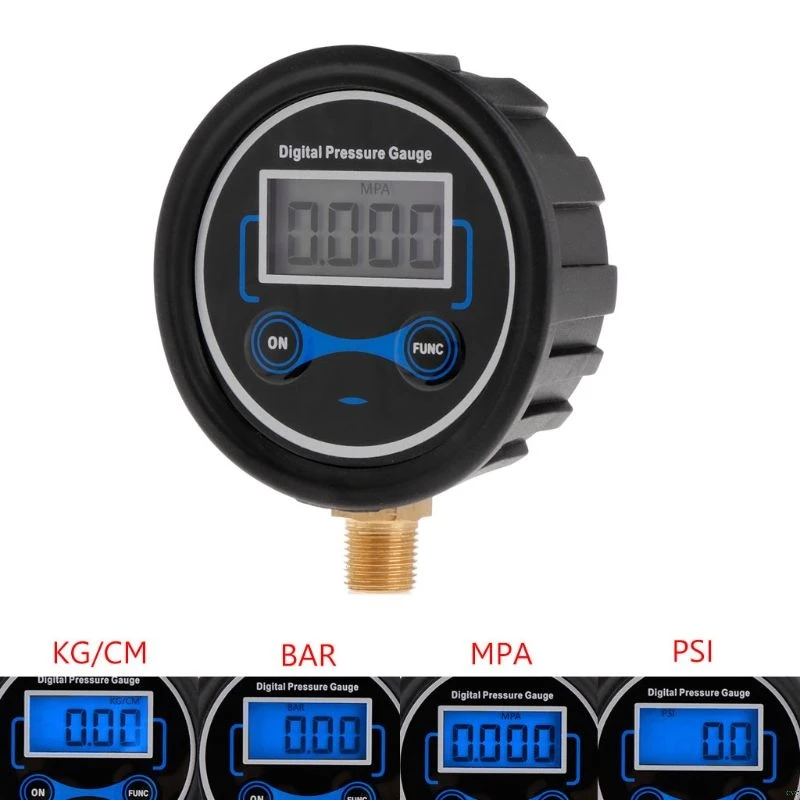 If the pressure within each tire is too high, you can easily drain some air by holding the tire pressure gauge against the tire valve at an angle, listening for the hiss of escaping air. Periodically check the tire pressure to ensure that you don’t drain too much air and stop once you reach the desired PSI.
If the pressure within each tire is too high, you can easily drain some air by holding the tire pressure gauge against the tire valve at an angle, listening for the hiss of escaping air. Periodically check the tire pressure to ensure that you don’t drain too much air and stop once you reach the desired PSI.
If the pressure within the tire is too low, connect an air compressor such as this portable inflator—a favorite in our researched guide to the best tire inflators—to the tire valve to inflate it. After inflating the tire, use the tire pressure gauge to check the PSI and make sure it is now at the correct level according to the manufacturer’s recommendations.
It’s advised to check the tire pressure on your vehicle at least once per month to ensure that you are safe while driving and not doing any unexpected damage to your tires.
RELATED: I Tried a Cordless Tire Inflator―Did It Work?
Final ThoughtsEffectively using a tire pressure gauge is a necessary skill for a driver to have in order to be certain that their vehicle is properly maintained.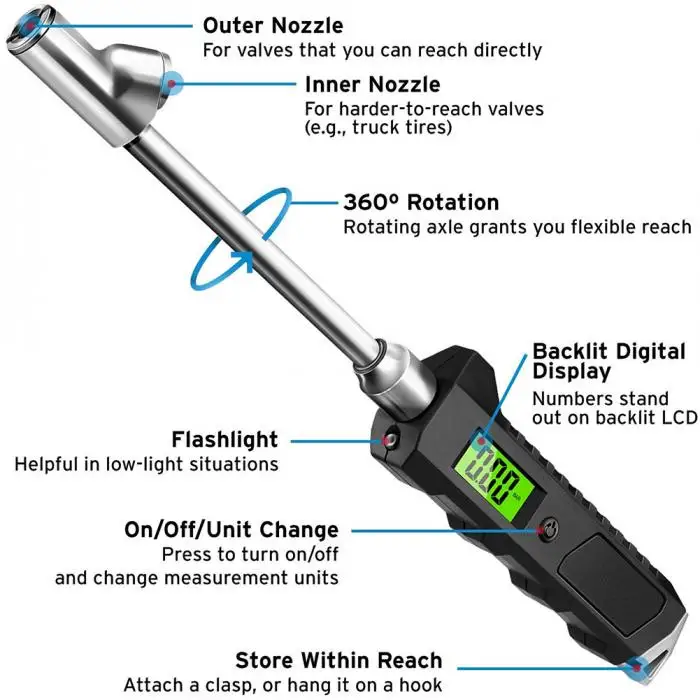 Additionally, by checking the tire pressure of the vehicle, drivers can ensure that they are getting the most out of each tire, instead of accidentally causing premature wear and tear due to overinflated or underinflated tires. Also, keep in mind that you can deflate a car tire with only a tire pressure gauge, but to fill the tire you will need access to an air compressor and a suitable attachment for filling tires. Consider investing in a home air compressor or find a local gas station that has one available for use.
Additionally, by checking the tire pressure of the vehicle, drivers can ensure that they are getting the most out of each tire, instead of accidentally causing premature wear and tear due to overinflated or underinflated tires. Also, keep in mind that you can deflate a car tire with only a tire pressure gauge, but to fill the tire you will need access to an air compressor and a suitable attachment for filling tires. Consider investing in a home air compressor or find a local gas station that has one available for use.
If you check tire pressure on a regular basis it will help the tires last longer and keep you safer on the roads. You should do this at least once a month, and before long road trips. Here is everything you need to know to check tire pressure accurately.
Simple stick style gauge for checking tire pressure
Tire Gauge – Tire pressure checks can be done either at a local service station or in your driveway or garage with a standard air pressure gauge like the one shown.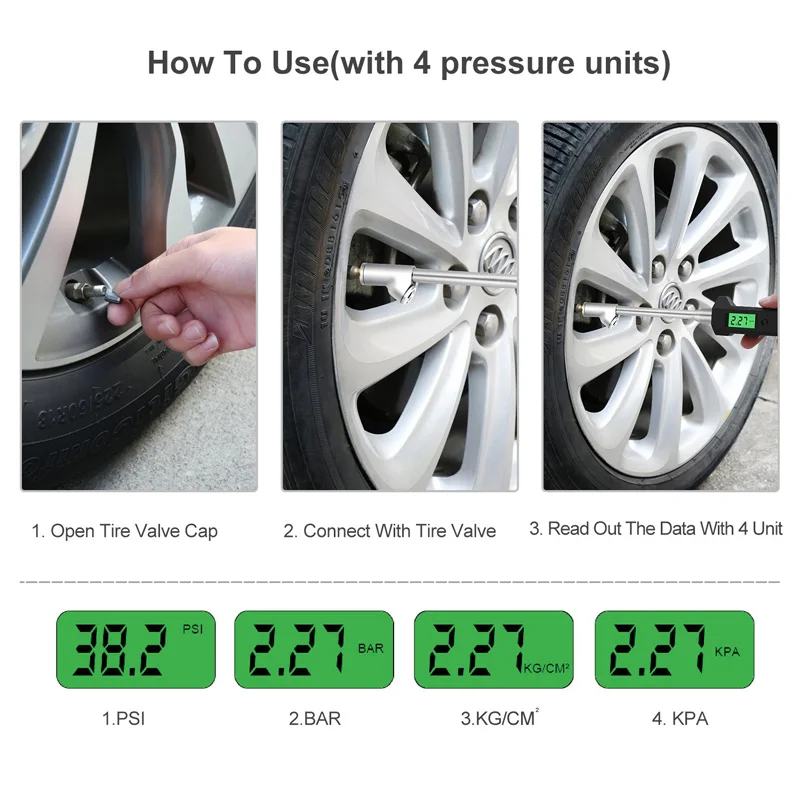 Digital gauges are equally accurate and easy to use. According to dmv.gov, the most accurate readings are done when tires are cold and haven’t been driven in a few hours.
Digital gauges are equally accurate and easy to use. According to dmv.gov, the most accurate readings are done when tires are cold and haven’t been driven in a few hours.
Tire Placard on inside of driver’s side door post
Recommended PSI – You will also need to know the recommended air pressure for your specific vehicle and tire. This can be found on the placard on the inside of the driver’s side door post on most vehicles. Alternatively, you can find it in the vehicle owner’s manual.
Watch this video on how to check your tire pressure, and follow the step-by-step instructions that follow:
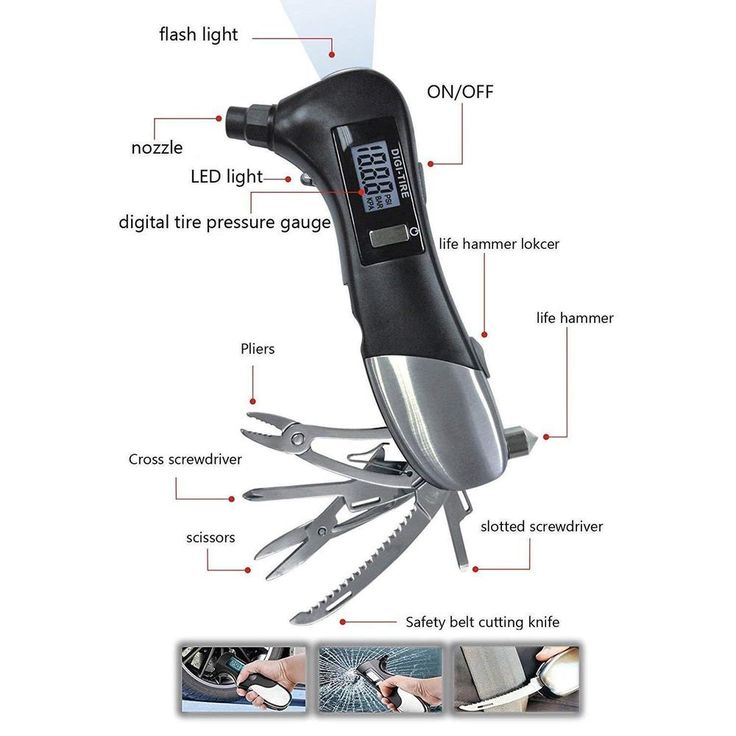 Look for the scale in PSI, which stands for pounds per square inch.
Look for the scale in PSI, which stands for pounds per square inch.
While you are doing the tire pressure checks, it is a good idea to take a few extra seconds to also visually inspect each tire for excessive tread wear, foreign objects stuck in the tire tread, deep cuts or large bumps on the side of the tire. Any of these conditions could mean your tires need to be replaced soon.
Tire pressure gauges have come a long way in technology. You may prefer the old standard stick technology type or might want to look at one of the newer digital models.
Stick type – simple, no batteries, just put on valve and push and you get a pressure reading. The one downfall is in the dark you may find it hard to read the pressure
Digital – displays the pressure number, no guessing, typically lighted. They are a bit pricier than the stick type.
Dial Guage – Analog dial face with a needle showing the pressure. Some models may be harder to handle than the other types.
Should you consider Nitrogen in your tires? You may want to have your tires filled with Nitrogen.
Benefits:
Because Nitrogen is less likely to seep through your tire walls than oxygen, it provides a more constant tire pressure during changing weather. More stable tire pressure results in less tire wear, thus prolonging the life of the tire. Nitrogen filled tires can also lessen corrosion on steel or aluminum rims.
If your tires are leaking air, are worn out, or need to be replaced for any other reason, Tires-easy.com has you covered. With the largest selection of new tires online, Tires-easy.com offers hundreds of tire brands, a wide range of prices, easy ordering, 45-day return policy, free road hazard and fast shipping. Call (855) 978-6789 or visit Tires-easy.com today.
Many drivers of modern cars may encounter a problem - the tire pressure sensor is on.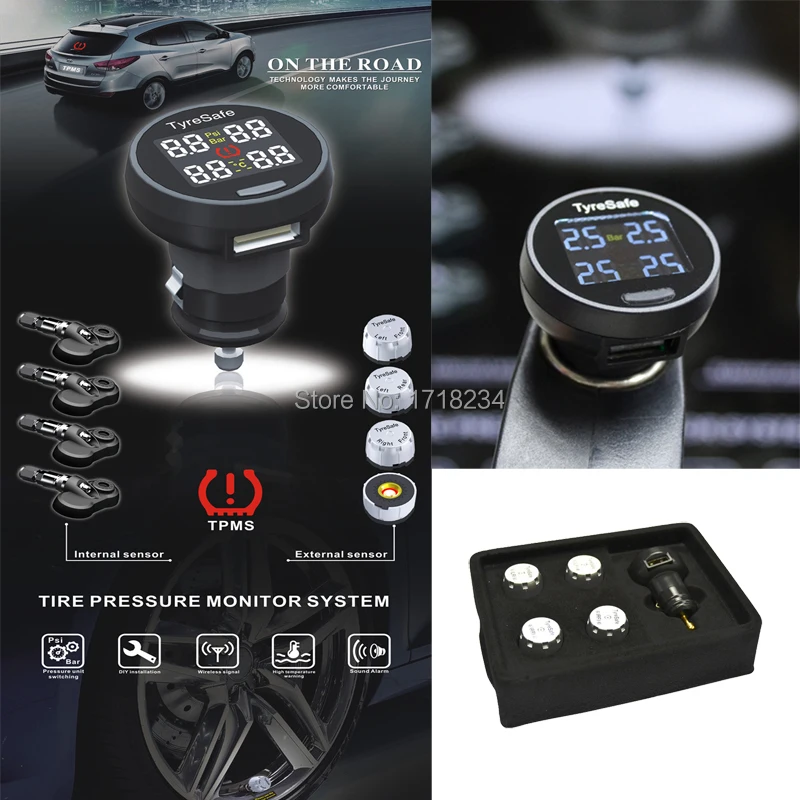 What should be done in this case? How to acquire such a device if it is not provided in the factory configuration? We will talk about all this below.
What should be done in this case? How to acquire such a device if it is not provided in the factory configuration? We will talk about all this below.
Equal pressure in each of the four wheels for a comfortable and safe ride . If there is no desire to check this parameter manually, you can entrust this to electronics. Basically, this equipment is battery-powered, and the instrument panel, in case of any malfunction, when the pressure drops below the allowable one, turns on the control lamp. In order for the readings to be as accurate as possible, four devices are needed, while each tire pressure monitoring sensor has its own separate battery and transmits data to the control module.
Today there are two types of such devices: external tire pressure sensors and internal ones.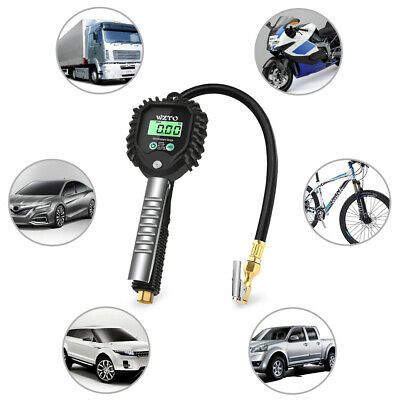 If you have several cars, or you are fond of "off-road" on your favorite SUV, then the first option will be more suitable for you, since external devices are mounted directly on the nipple, and they can be quite easily rearranged from one rubber to another. The internal ones, which already belong to the new generation, are attached to the car disc instead of the mouthpiece. Such a tire pressure indicator sensor is lightweight, so there can be no problems with its installation, and if you wish, you can do it yourself.
If you have several cars, or you are fond of "off-road" on your favorite SUV, then the first option will be more suitable for you, since external devices are mounted directly on the nipple, and they can be quite easily rearranged from one rubber to another. The internal ones, which already belong to the new generation, are attached to the car disc instead of the mouthpiece. Such a tire pressure indicator sensor is lightweight, so there can be no problems with its installation, and if you wish, you can do it yourself.
The battery, located inside the sensor itself, is designed for a minimum of seven years of uninterrupted operation.
The installation of tire pressure sensors will take quite a bit of time, but, in this way, it will be possible to fully control the situation, because, as you know, a pressure difference of just a few tenths of a bar cannot be visually determined. But, as research shows, a difference of only 0.4 bar for the front and 0.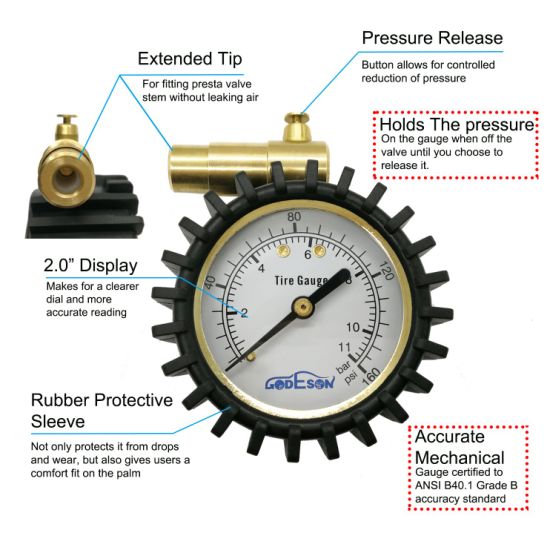 6 for the rear wheels is critical, which means that your car is completely beyond your control and can behave quite unpredictably, especially in an emergency.
6 for the rear wheels is critical, which means that your car is completely beyond your control and can behave quite unpredictably, especially in an emergency.
Mechanical damage is also quite common, such as a broken nipple, most often this is due to a road surface that is far from ideal. However, sometimes such a breakdown can also occur through the fault of the owner, for example, if he inaccurately unscrews the tire pressure indicator caps, etc. Naturally, it is quite easy to notice such malfunctions, only a visual inspection is enough.
What to do if the tire pressure sensor lights up, while the pressure is at the right level? As mentioned above, the device must be reset, for this you should turn off the engine, then, turning on the ignition, but without starting the engine, hold down the SET button and hold until the sound signal appears.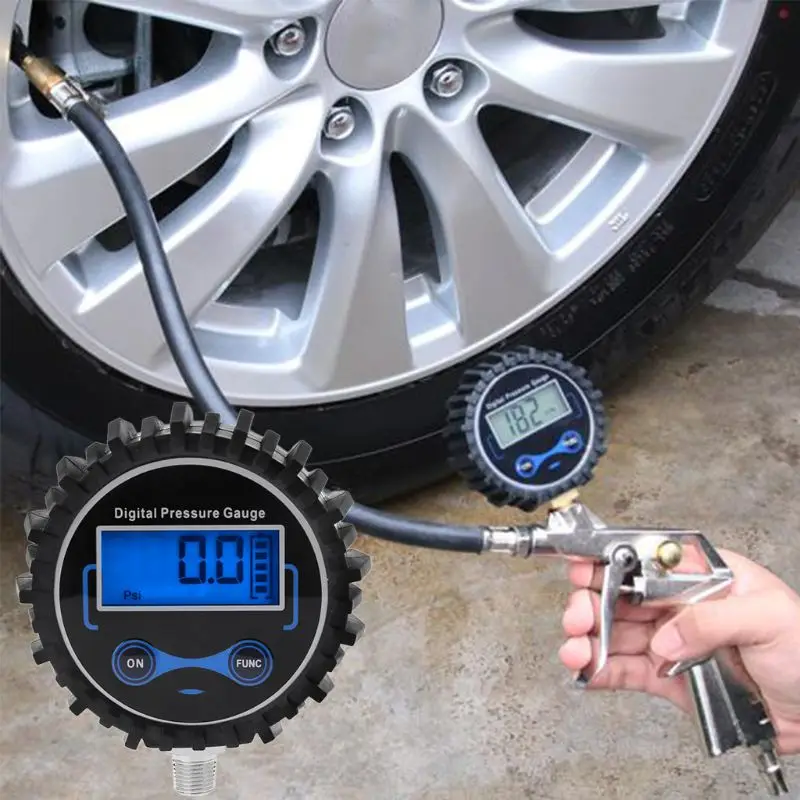 Now you can safely start the engine and continue on your way. In case of mechanical damage, it is necessary to replace the broken element; they are quite easy to find on the shelves of specialized stores.
Now you can safely start the engine and continue on your way. In case of mechanical damage, it is necessary to replace the broken element; they are quite easy to find on the shelves of specialized stores.
Rate this article:
(2 votes, average: 3 out of 5)
Share with friends!
Adblock
detector
 S.
S. 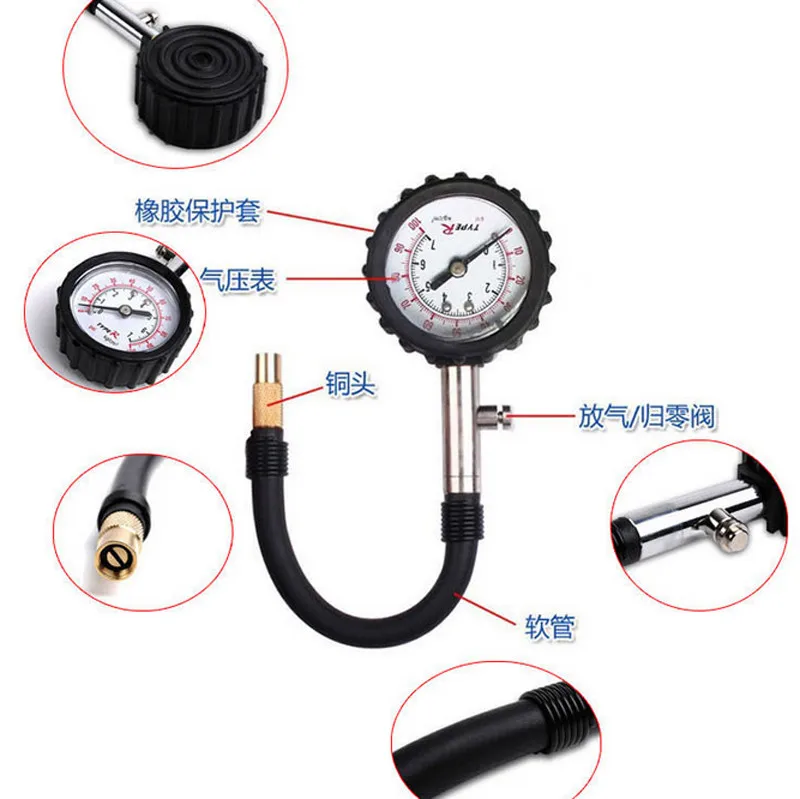 S.
S. | Vitaly Kabyshev, . Photo of manufacturers | |
| A punctured tire is always very annoying. But it is better to know about the flat tire in advance - this is where tire pressure sensors will help. |
The first patent for a tire was obtained in 1846, and since then the wheels have been constantly punctured. It is clear to anyone that a flat tire does not bode well. Yes, and dropped pressure can be very dangerous: it’s not for nothing that in the “Daily Maintenance” section of the car’s operating instructions, the item “Checking tire pressure” is one of the first.
When a tire "breathes", the rolling resistance increases significantly.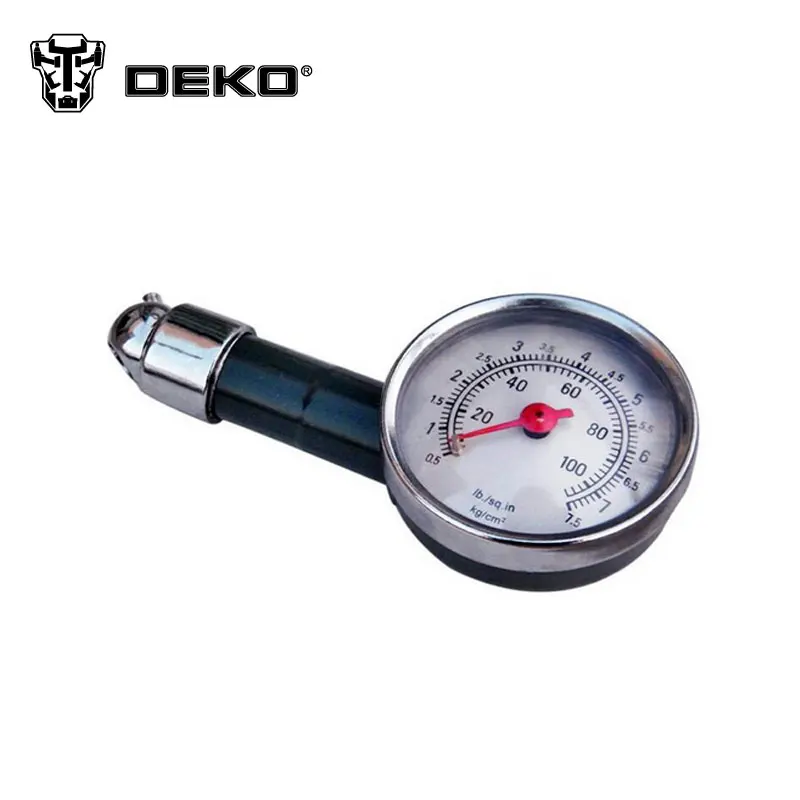 Where does this lead? To an increase in fuel consumption, increased tire wear and, of course, to the side slip of the car. Moreover, such a small drift to the side can be attributed to the slope of the road or rut. So the driver, by mistake or inexperience, can continue to move for quite some time. And the most dangerous thing about this is that in an emergency, for example, during a sharp maneuver or braking, a flat tire can break off the disc or turn over. And here it is not far from the accident.
Where does this lead? To an increase in fuel consumption, increased tire wear and, of course, to the side slip of the car. Moreover, such a small drift to the side can be attributed to the slope of the road or rut. So the driver, by mistake or inexperience, can continue to move for quite some time. And the most dangerous thing about this is that in an emergency, for example, during a sharp maneuver or braking, a flat tire can break off the disc or turn over. And here it is not far from the accident.
Therefore, this disgrace must be fought with all our might. And the sooner the driver notices the loss of pressure, the better. Of course, the easiest way is to check the pressure before the trip by connecting a pump or pressure gauge to each wheel in turn. But we are lazy and forgetful people. And the pleasure of poking around in the cold or in the rain with some kind of devices is small. Moreover, there is already a whole bunch of systems that can check this very pressure.
China-made caps indicate pressure loss by changing color. Informativeness is good, accuracy is questionable.
Informativeness is good, accuracy is questionable.
The simplest of them are special caps with color indicators, which are installed instead of the standard caps on the boost valves. The pressure dropped below, say, two atmospheres - a warning yellow (orange, purple) strip will appear under the transparent cap of such a miracle cap. Yeah, it's clear that something is wrong with the wheel, we need to check. The pressure has dropped even lower - the cap will “paint” in a different, usually red color, which will indicate the criticality of what is happening. The advantage of this approach is simplicity. Minus - not enough good information content. After all, the caps can only be seen during a stop. Still, getting around the car before the trip, looking at the colors of the caps, is much easier than measuring the pressure every time.
Another disadvantage is that the caps begin to inform about the change in pressure only when it falls below some certain values, which, by the way, can be quite normal for your car and your wheels.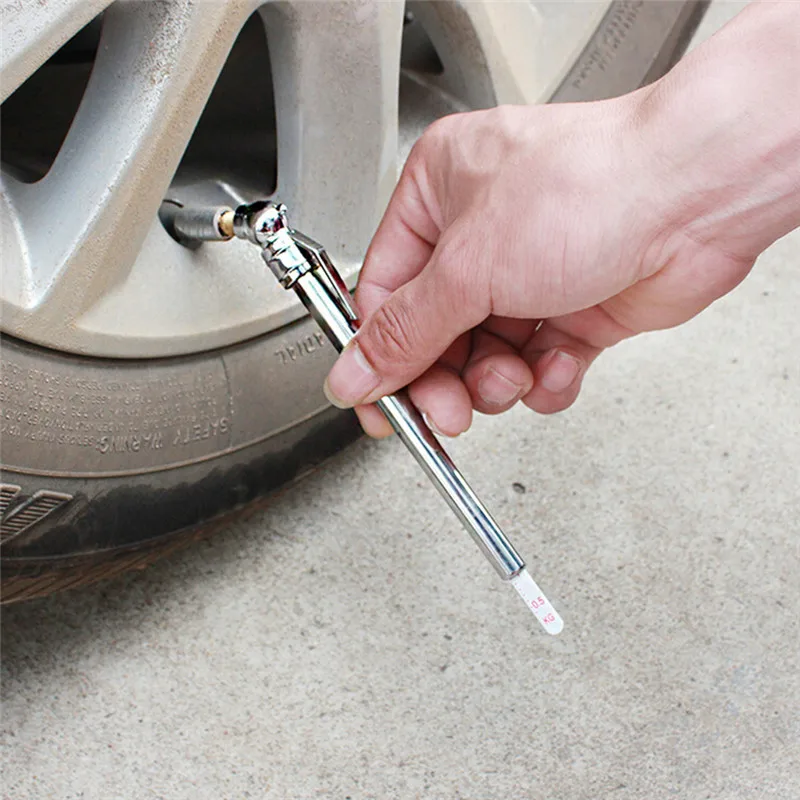 So, you need to select them exactly for your car.
So, you need to select them exactly for your car.
The radio sensors of many electronic monitoring systems are mounted on the disk using special clamps.
And in order to notice something wrong while driving, it would be nice to have an electronic system on board that would automatically notify you of dangerous pressure drops. And not just notify, but would do it on time (so that there was time to orient) and without false positives.
The installed control system in this case will warn the driver at the right time about a change in the corresponding parameter and give him enough time to stop the car safely. It is clear that in cases of a serious puncture or explosion of a tire, such systems will not help, since the driver will feel the car pull without any sensors. But with a “slow” puncture, such electronics are simply irreplaceable.
There are, for example, systems that transmit tire pressure and temperature data to the central unit via radio. And there are those who can transmit this data via Bluetooth to phones or communicators. Well, it's very convenient.
Well, it's very convenient.
X-Pressure pressure monitoring system developed by Pirelli. In the simplest version of Optic, it consists of four caps that are installed on regular valves. And they signal a drop in pressure by a change in color.
But there are more tricky systems that work without "real" pressure sensors, but through ABS. It is they who are usually put in the standard configuration of cars. How do they work?
Electronics with the help of sensors determines the speed of the wheels and their relative difference at each moment of time. As you know, when the pressure drops, the height of the tire profile becomes lower. Consequently, the speed of rotation of the wheel with the "sick" tire increases, therefore, the difference in the frequencies of rotation of the wheels on the same axle also increases. As a result, the system captures these changes - and gives an alarm signal.
Acoustic X-Pressure system. Sensors are built into the caps that register pressure, and radio transmitters that provide communication with the central unit. As soon as the pressure has dropped, a corresponding indication appears on the display of this unit and a warning sound signal is heard. Batteries in caps are enough for about 5 thousand hours of operation, which corresponds to five years of operation. Replacement of batteries in the caps is not provided, therefore, at the end of the service life, the set must be changed completely.
As soon as the pressure has dropped, a corresponding indication appears on the display of this unit and a warning sound signal is heard. Batteries in caps are enough for about 5 thousand hours of operation, which corresponds to five years of operation. Replacement of batteries in the caps is not provided, therefore, at the end of the service life, the set must be changed completely.
Why is this indirect method of determining tire pressure bad? Such systems can work, for example, in long turns, when for a relatively long time the system detects a large difference in the rotational speeds of the wheels of different sides (after all, the outer wheels spin at a higher speed than the inner ones). And these are flowers.
One of the more sophisticated X-Pressures, AcousticBlue can transmit pressure data via Bluetooth to a mobile phone. There is such a thing from 160 euros.
In some cases, such systems are useless at all. For example, when tires with run-flat technology are installed on a car.